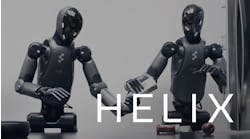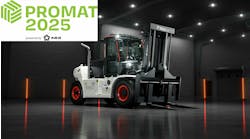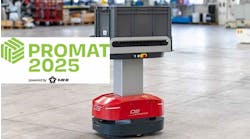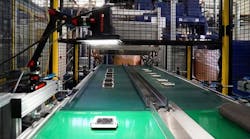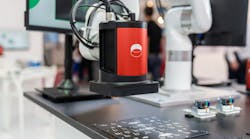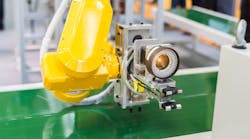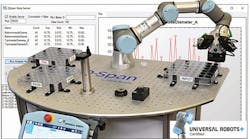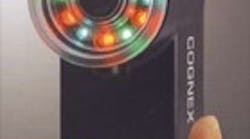Latest from Automation
Camera Specs Take a Backseat in the Era of AI
If humans had the eyesight of an eagle, we could spot an ant from the top of a ten-story building. But do we actually need to? Probably not, which is why our eyesight did not evolve in this direction.
Similarly, machine vision engineers are pushing the frontiers of camera specifications to offer solutions with incredible resolution. But do manufacturers need this level of sophistication?
Birds of prey can see up to five times further than a human being with perfect vision. Their eyesight evolved to allow them to swoop down on their prey with incredible accuracy, making them terrific hunters. In nature as well as in industry, the ability to adapt to environmental demands, and coming up with the simplest and most efficient solution, is what characterizes successful evolution.
In machine vision, the evolution of the field has been dominated by attempts to achieve the best image possible of the product to be inspected. The marketing of ultra-high-resolution digital cameras—offering thirty megapixels and higher—is just one of the ways that machine vision suppliers are trying to meet their clients’ expectations.
These solutions, however, do not tackle the biggest shortcomings of the industry. The hardware, software, and algorithms of traditional solutions for visual quality assurance (QA) are tailor-made by a systems integrator to inspect only one product at a specific junction in the production line, and the process of designing, creating, installing, and validating them is time-consuming and very expensive. Moreover, all phases often require numerous iterations after the validation stage.
Sophisticated cameras and illumination settings were developed to increase the detail level and the signal-to-noise ratio to much higher levels than would be required by a human inspector. Such technology makes things easier for the systems integrator when setting an algorithm, but these highly sophisticated cameras and their accessories make up a big chunk of the final cost—lenses and filters alone can cost a small fortune.
Evolution or Revolution
Autonomous machine vision (AMV), a new category of machine vision, is not the next evolutionary step in the existing ecosystem, but the start of a new era in machine vision.
The Inspekto S70, the first AMV system, offered by German-Israeli start-up Inspekto, takes a different technological approach.
Building on recent academic and industrial achievements in AI, Inspekto’s team pushed the frontier of autonomous systems to offer better decision-making and hardware-tuning. Because of this, the system can reach excellent inspection results in a fraction of the set-up time and greatly reduce the costs associated with traditional solutions for visual quality assurance (QA).
The Inspekto S70 is designed to be flexible and user-friendly so that any employee can install it in 30 to 45 minutes. The system integrates a Video-Sensor-Optimization AI engine that automatically adjusts the illumination and camera parameters to the reflective properties of the product and the environmental conditions.
Changes in lighting, the nightmare of traditional QA solutions, are not a problem thanks to the system’s self-adjusting capabilities.
Additionally, a Detection & Alignment AI engine can autonomously locate the product in a 3D space using just one image. This means that during the set-up phase, the user can add sample items in any orientation since the S70’s algorithms will detect and localize them even under heavy transformation and rotation.
During installation, the user simply traces the field-of-view (FOV) and presents an average of 20 sample items to the system, which will automatically learn what a perfect item should look like. The benchmark for inspection is therefore established using a limited number of good products instead of hundreds or thousands of defective ones. This simplifies the set-up process and makes it more accurate since manufacturers usually don’t have a sample item for every possible abnormality.
After the system has learned the item’s characteristics, the inspection can begin. The S70 will alert the user automatically if it detects a product outside the parameters of the collected good samples set. However, if the QA manager deems that the item is not defective, the Defect Detection AI engine will process the new sample as a good product and the same issue will not be flagged up again.
The simple and quick setup process means that the system can be moved from one point to the other of a production line when needed, offering unprecedented flexibility.
Additionally, since the whole system costs less than one-tenth of traditional solutions, plant managers can have an S70 at every junction of the production line instead of just at the end, achieving what we call Total QA—quality assurance at every step of production.
Autonomous machine vision focuses on pushing the boundaries of AI, not of camera specifications. Because of the benefits offered by several AI engines working in tandem, the S70 can self-adjust its sensing equipment to provide a clearer image and consequently a more reliable inspection than traditional solutions with state-of-the-art cameras, which add to the final cost without offering the flexibility and simplicity of use that manufacturers are asking for.
Eagles need incredible visual acuity, but manufacturers don’t. Instead of developing increasingly sophisticated and therefore expensive cameras, Autonomous Machine Vision offers a flexible, user-friendly, and cost-effective answer to plant managers’ QA needs.
Click here to learn more about the Inspekto S70 and its characteristics.
